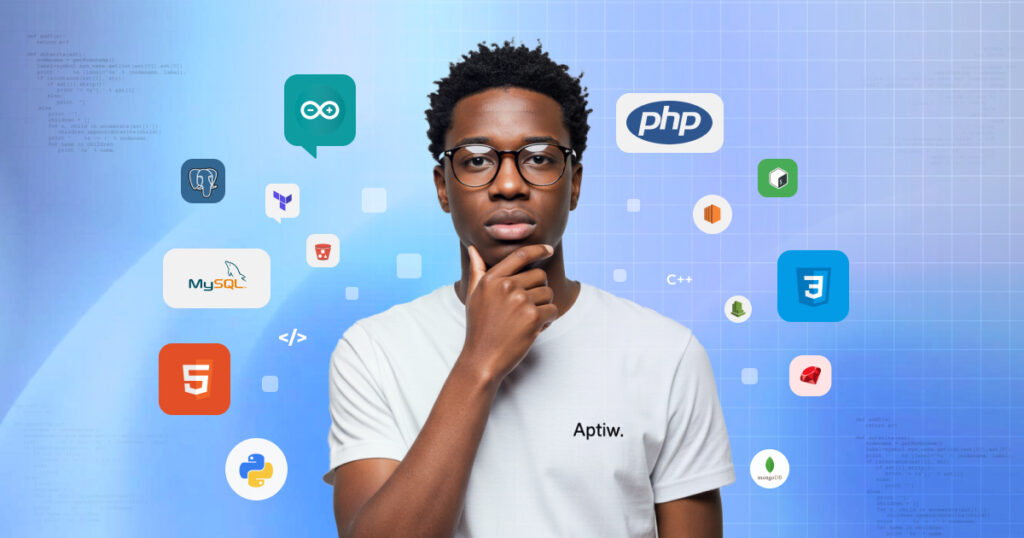Jul. 7, 2025
Last updated: Jul. 9, 2025
Last updated: Jul. 9, 2025
Last updated by:
3 min read
Starting to code is exciting, but choosing your first programming language can feel overwhelming with so many options. Should you learn Python? JavaScript? PHP? Ruby?

Here’s the truth: There’s no single “best” first language; just the one that aligns best with your goals. Let’s break it down simply so you can make an informed choice.
Step 1: What Do You Want to Build?
Different languages excel at different things. Ask yourself:
- “Do I want to build websites?”
→ JavaScript (front-end) + PHP/Python/Ruby (back-end)
- “Am I interested in data science or AI?”
→ Python (the industry standard)
- “Do I want to make mobile apps?”
→ Swift (iOS) or Kotlin (Android)
- “Is game development my thing?”
→ C# (Unity) or C++ (Unreal Engine)
- “I want to work with content management systems.”
→ PHP (used in WordPress, Drupal)
Step 2: How Easy Is It to Learn?
Some languages are more beginner-friendly than others:
- Python → Simple syntax, reads like plain English
- JavaScript → Essential for web dev, immediate visual feedback
- PHP → Straightforward for server-side web development
- Ruby → Clean syntax, beginner-friendly community
- Java/C# → More verbose but great for learning OOP concepts
Step 3: Job Market Demand
Current industry needs:
- JavaScript → Required for nearly all web development roles
- Python → Dominates data science and automation jobs
- PHP → Still widely used in web maintenance and CMS development
- Java/Kotlin → Strong in enterprise and mobile development
Step 4: Try Before You Commit
Most languages have free intro courses:
- Python: LearnPython.org
- JavaScript: w3schools/js
- PHP: PHP: The Right Way
Spend a couple of hours with each to see what feels right.
The Important Thing: Just Start
Don’t get stuck in analysis paralysis. The core programming concepts you’ll learn (variables, loops, functions) transfer between languages.
Many successful developers started with one language and learned others as needed. What matters most is that you:
- Pick a language relevant to your goals
- Start building projects as soon as possible
- Keep learning and adapting
Final Thought: The Best Language is the One You’ll Use
At the end of the day, programming isn’t about picking the “perfect” language; it’s about finding one that excites you enough to keep coding.
Will there be frustrating moments? Absolutely. Will you sometimes wonder if you chose wrong? Probably. But here’s the secret every developer knows: Your first language is just the beginning of the journey, not the destination.
So take a deep breath, pick one that aligns with your goals (even if it’s not “the best”), and start building something, anything, today. The rest will follow.
Ready to begin? Here are your next steps:
- Choose one language from this list
- Find a beginner tutorial (we’ve linked some above)
- Code for just 30 minutes today
- Repeat tomorrow
The only wrong choice is not starting. Now go write your first lines of code, we’re rooting for you!
Still not sure which language to learn first? Flip a coin between Python and JavaScript, and you can’t go wrong with either.
Finally, if you’re just starting out and you’re not quite sure what direction you’d like to go in yet, whether frontend, backend, or something in between, you might find this helpful:
Frontend vs Backend Development: What’s the Real Difference?